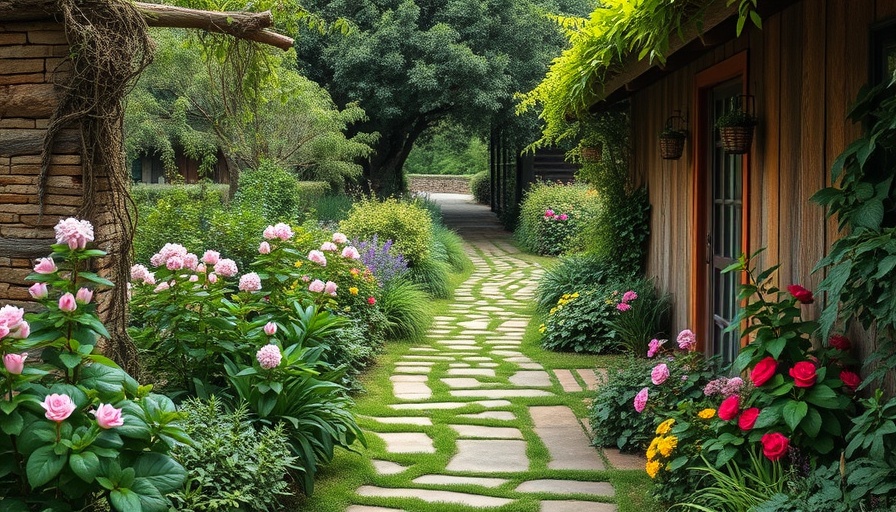
Transform Your Space With a Budget-Friendly Boardwalk Path
For homeowners looking to enhance their landscaping without breaking the bank, the creative process of building a sleeper boardwalk is both practical and aesthetically pleasing. Inspired by the "Building Sleeper Boardwalk On A Budget | Episode | Great Home Ideas," let’s explore the benefits of adding a pathway to your outdoor oasis while tapping into cost-effective techniques.
In "Building Sleeper Boardwalk On A Budget | Episode | Great Home Ideas," the discussion dives into innovative landscape design through affordable pathways, exploring key insights that sparked a deeper analysis on our end.
Why Pathways Matter in Garden Design
Consider the integral role pathways play within your garden. Not only do they guide visitors through your landscape, but they also create defined spaces and functional routes to essential areas like storage sheds or vegetable patches. This operational aspect can be beautifully paired with the charm of a well-designed path, seamlessly connecting various elements of your outdoor space.
Understanding Budget-Friendly Materials: Sleepers
Sleepers, usually made from timber, provide an eco-friendly and durable option for creating striking pathways. They come pre-cut and ready for use, which minimizes waste through clever arrangement. As we learned from the video, 2.4m sleepers can effectively create a sturdy pathway with minimal off-cuts – a staple in sustainable gardening.
Your Step-by-Step Guide to Building a Garden Path
Here's a simplified guide on constructing your sleeper path:
- Planning and Preparation: Mark the area where you want the pathway. A string line can guide you in creating a straight, level path.
- Base Setup: Lay down some road base to create a solid foundation for your access point.
- Installation: Arrange your sleepers strategically, staggering cuts to enhance strength.
- Finishing Touches: Paint your sleepers to give them a fresh look and then secure them in place with screws for extra durability.
This simple yet effective approach not only ensures a long-lasting path but also enriches your environmental footprint, making it an ideal choice for eco-conscious homeowners.
Adding Organic Beauty: Planting Along Your Path
Once your pathway is installed, consider bringing some life to the border with organic planting. Native violets, for instance, can add bursts of color while also supporting local biodiversity. By alternating plant placement on either side, you'll create a natural flow that enhances accessibility while remaining visually appealing.
Beyond the Basics: Decorative Options for Paths
Engage with your landscape by incorporating decorative elements like garden lighting or flower beds along your path. Staggered planting of perennial flowers can add bursts of color throughout the seasons or consider installing a butterfly garden to attract pollinators, enhancing the overall ambiance and health of your home’s ecosystem.
Sustaining Your Newly Built Path
After creating your outdoor path, ensure its longevity with regular maintenance. Watering schedules and weeding techniques will help keep the surrounding plants vibrant, while mulching can suppress weeds and retain moisture. It's all part of maintaining a healthy ecosystem that benefits both your property and the environment.
Conclusion: Embrace DIY with Heart
Building a sleeper boardwalk path is not only an affordable DIY project but also serves as a beautiful transformation of your outdoor space. By planning and investing in sustainable practices, you contribute positively to your environment while enjoying a practical and aesthetic enhancement to your garden. Whether you are gardening for the first time or are a seasoned green thumb, this project is a wonderful way to bring creativity and functionality together in your yard. Ready to get started? Gather your materials and let your garden shine.
 Add Row
Add Row  Add
Add 




Write A Comment